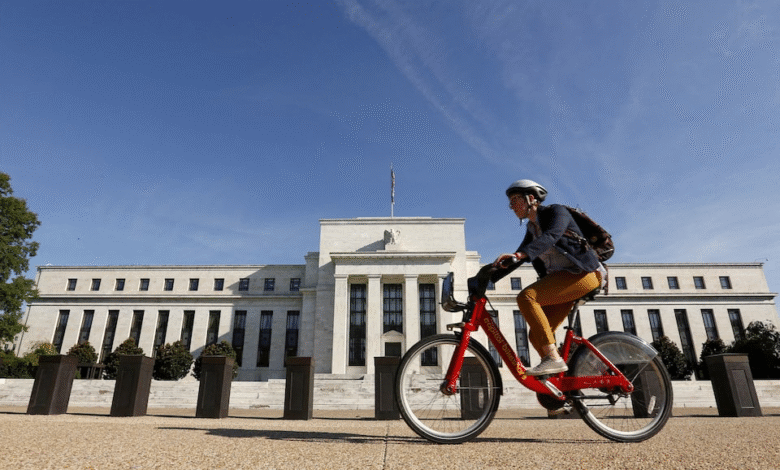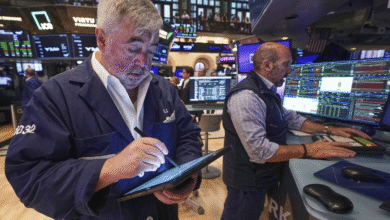Fed Rate Cut Uncertainty Grows Amid Inflation Jitters

The Fed rate cut has recently become a centerpiece of discussion among economists and traders alike, especially in light of the latest inflation jitters revealed by the Producer Price Index (PPI) report. As inflationary pressures make their presence felt, the possibility of the Federal Reserve lowering interest rates appears less certain than previously anticipated. Recent data from the CME Fedwatch tool shows that while traders are still betting heavily on a cut at the upcoming September meeting, the probability has dipped from a high of 96% to just 92.8%, prompting a more cautious approach. Kalshi traders, for their part, are also reflecting this sentiment, indicating a potential shift in expectations as the market grapples with fluctuating economic indicators. With Polymarket odds showing a high probability for a modest rate decrease, the landscape remains dynamic, and all eyes are on how new inflation data will influence the Fed’s next move.
In the realm of monetary policy, discussions around a reduction in interest rates have evolved, especially following the latest inflationary signals. The potential for a Fed interest rate adjustment has become increasingly complex as traders assess varied economic indicators and their implications on market stability. Recent fluctuations in PPI data have stirred concerns, leading financial analysts to reconsider the timeline and magnitude of any expected cuts. Tools like CME Fedwatch and insights from platforms such as Kalshi and Polymarket are illuminating traders’ sentiments, shedding light on the evolving odds surrounding a crucial monetary decision. As expectations shift, market participants remain vigilant about additional economic reports that could reshape the dialogue around interest rate policies.
Understanding the Impact of the PPI Report on Fed Rate-Cut Expectations
The Producer Price Index (PPI) report serves as a critical barometer for inflation expectations and can heavily influence market sentiment regarding Federal Reserve monetary policy. Following the release of the latest PPI data, the anticipated path toward a federal funds rate cut has shown signs of wavering. Traders had initially positioned themselves overwhelmingly in favor of a cut, but the unexpected inflation figures have injected a new layer of uncertainty into the equation. As market participants analyze these developments, they must account for the shifting dynamics stemming from inflation jitters and how these might affect rate decisions in the near term.
The recent data indicates that the likelihood of a cut at the September Fed meeting is still present but clouded by ambiguity. The CME Fedwatch tool reflects a noteworthy drop in certainty around a rate cut, illustrating how economic indicators can rapidly reshape expectations. This pivot in perceived probability suggests traders are reassessing their strategies, mindful of how inflation pressures might deter the Fed from aggressive easing, favoring instead a more cautious approach to monetary policy.
Frequently Asked Questions
What impact does the PPI report have on expectations for a Fed rate cut?
The Producer Price Index (PPI) report significantly influences expectations for a Fed rate cut. Following the recent PPI data release, which showed higher-than-expected inflation, the likelihood of a cut dropped from above 96% to approximately 92.8%, indicating growing uncertainty among traders regarding the Federal Reserve’s monetary policy.
How do Kalshi traders view the possibility of a Fed rate cut in September?
Kalshi traders are currently betting heavily on a modest Fed rate cut, with about 76% predicting a 25-basis-point reduction at the September meeting. However, after the recent PPI report, confidence in the cut weakened slightly, reflecting the market’s cautious outlook based on inflation jitters.
What are the Polymarket odds regarding a Fed rate cut in September 2025?
As of August 15, 2025, Polymarket odds suggest a 72% chance of a quarter-point Fed rate cut in September. The chances of maintaining current rates have increased to 23%, showing that while a reduction is favored, there is growing skepticism stemming from the latest inflation signals.
How is the CME Fedwatch tool reflecting changes in Fed rate cut expectations?
The CME Fedwatch tool shows a decline in the probability of a Fed rate cut, dropping from over 96% before the PPI report to 92.8% afterward. This shift underscores the effect of inflation jitters on market expectations, as traders reassess their positions in light of new economic data.
What does the market sentiment indicate about future Fed rate cuts amid inflation concerns?
Market sentiment currently leans towards an expectation of a modest Fed rate cut, mainly due to uncertainty induced by rising inflation concerns. While most traders anticipate a 25-bps cut, the recently released PPI report has introduced caution, suggesting that the landscape could change with upcoming economic developments.
| Key Point | Details |
|---|---|
| PPI Report Release | The U.S. Producer Price Index (PPI) report has revealed hotter-than-expected inflation data. |
| Market Expectations | Initially, there was a strong belief in a rate cut at the Federal Reserve meeting, but confidence has dipped after the PPI report. |
| Probability of Rate Cut | As of August 15, 2025, the probability of a cut decreased to 92.8% from above 96%. |
| Trader Confidence | Kalshi traders are at 97% confidence for rates staying above 3%, with the most anticipated cut being 25 basis points. |
| Polymarket Odds | Polymarket shows a 72% chance for a quarter-point cut, while the odds of a larger cut are minimal. |
| Overall Market Sentiment | Although markets expect a cut, the consensus reflects cautiousness due to inflation fears, with traders aware of sudden shifts. |
Summary
The Fed rate cut remains a hot topic in financial discussions as recent inflation data has injected uncertainty into previous expectations of a certain cut at the Federal Reserve’s September meeting. While a modest reduction is still favored by many traders, the market’s dipping confidence and shifting probabilities indicate a cautious outlook among investors, reflecting their readiness for potential surprises based on unforeseen economic data.



